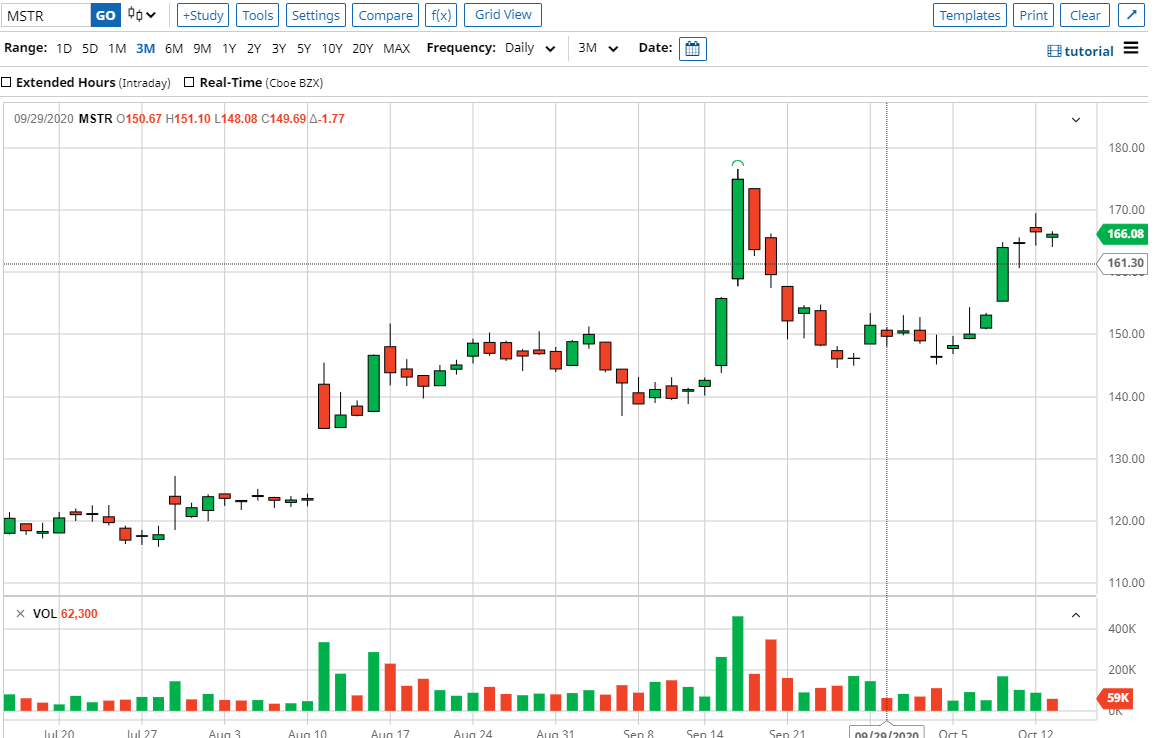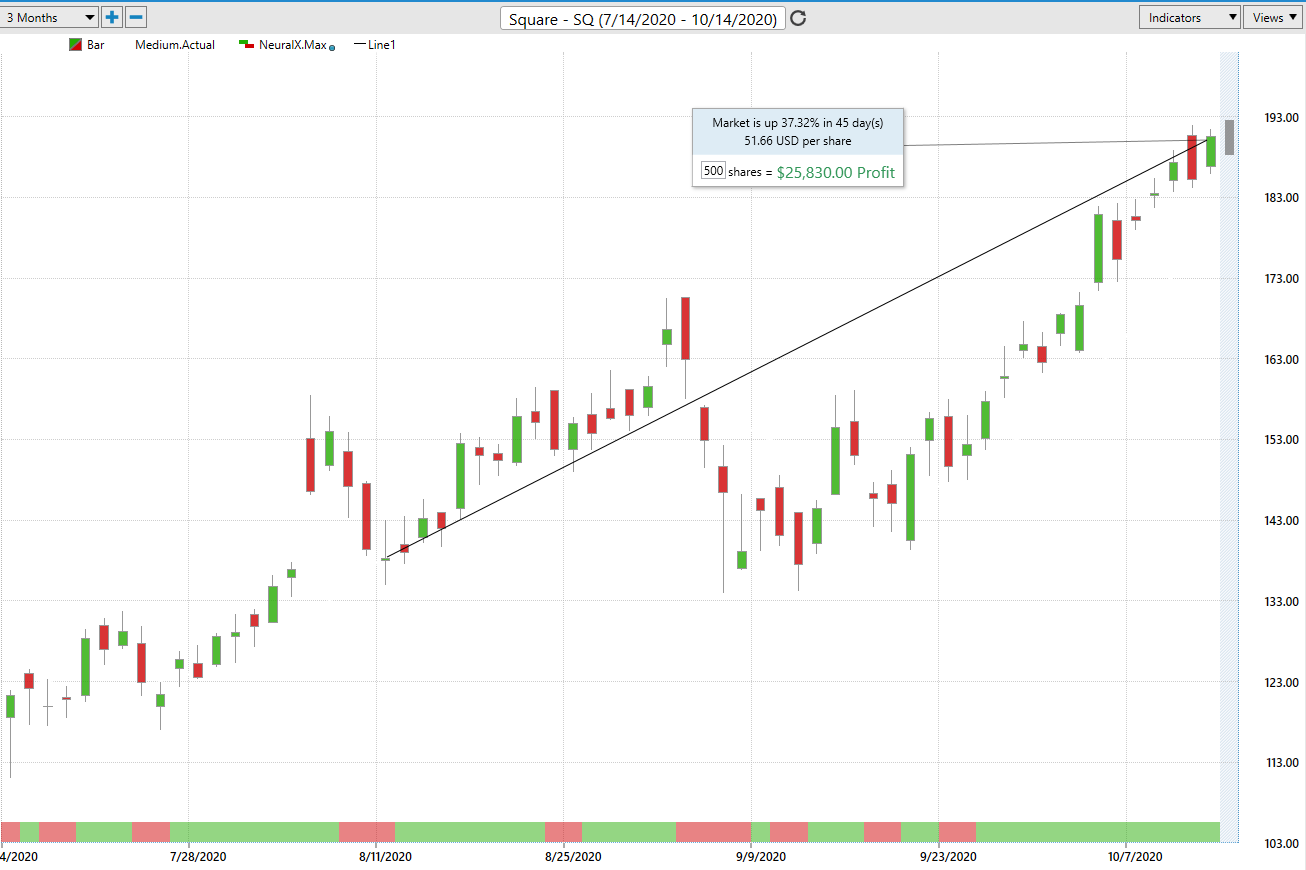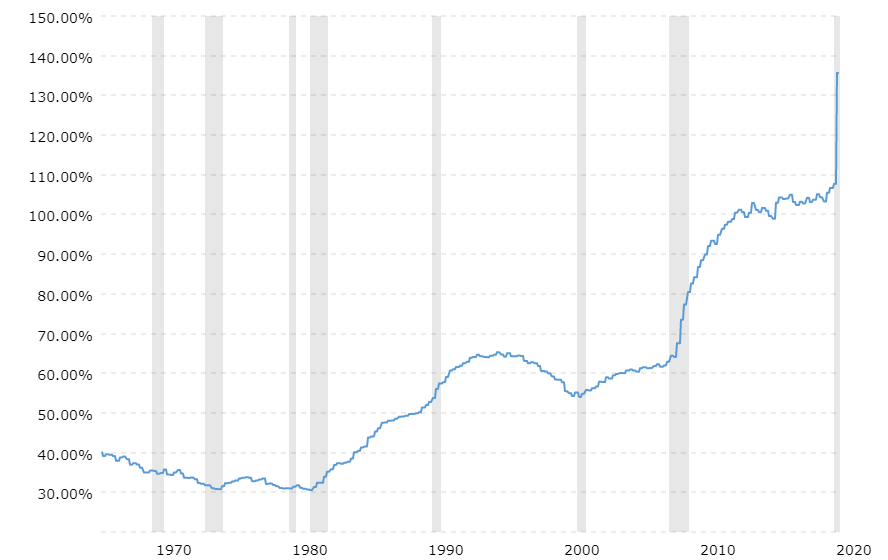Negative Interest Rates – The Greatest Show on Earth!
A few weeks ago I wrote an article showing you how you could use SEC Form 13F to track the trades of any institutional portfolio manager. Remember, it can be helpful but also because of the delays in receiving the reporting from the SEC, how it can be completely a waste of time. The purpose of the article was to illustrate how you can be your own truth detective in search of a better investment thesis and better results. As traders, we always have to do the risk versus reward math and understand the changing landscape of potential investment returns as we analyze opportunities.
The biggest question facing investors today is how do you appropriately define cash?
Historically, cash has been legal tender like currency, coins and short-term treasury obligations that are liquid. But today we have an economic landscape where governments want to abandon physical currency entirely and adopt a digital framework. These governments tell you it is for health reasons, but many analysts feel that technology, specifically a high-quality printer makes it very easy for almost anyone to become a successful professional counterfeiter. Once upon a time it was an expensive proposition and laborious process to reproduce a high-quality U.S. greenback – not to mention the difficulties in laundering the large quantities of cash needed to repay the investment. However, today’s color photocopiers, scanners, and ink-jet printers have opened up counterfeiting to a. younger, more comfortable with technology generation. It is estimated that several billion dollars a year are illegally reproduced very inexpensively due to the advent of inexpensive high-tech tools.
When the Federal Reserve has a monetary policy that is destined to keep interest rates at or near zero percent for several years while simultaneously targeting a 2% inflation rate, you have an economic landscape for rapid loss of purchasing power in place. I recently wrote an article on this which you can find here.
From the article:
One of the key principles of investing and good economic policy is a principle called the “Real Rate of Return.” This idea is the bedrock of basic investment analysis. It’s calculated by taking the yield of an asset and subtracting the projected inflation. So, if the policy paper was accurate, the yield on a 10 Year Treasury Bond was ZERO, and inflation was at 2%, that means that the real rate of return for investing in any American Treasury instrument, moving forward, was negative 2%. Billions of dollars mature every week from past Treasury activity. They usually just roll over their commitments to another U.S. Treasury bond at least 10 years into the future. One question I had is very simple. Who is going to buy any American credit obligation when your net return, is best case, negative 2% per year? How does anyone get convinced that a “guaranteed loss of money” is a good idea for them to pursue? How in the world is this good economic policy?
When writing those words, I saw negative interest rates as an approaching menace. However, it appears several high-tech titans see this policy as an immediate menace. These captains of industry have begun converting their balance sheet “cash” into alternative assets like bitcoin. I consider this the biggest news development we have seen related to money since President Nixon took the U.S. off the Gold standard in August 1971.
On August 11, 2020, a publicly traded company, Microstrategy Incorporated (MSTR) converted $250 million dollars of its balance sheet cash into Bitcoin. From the Press Release:
On September 14, 2020, Microstrategy completed its acquisition of 16,796 additional bitcoins at an aggregate purchase price of $175 million. To date, we have purchased a total of 38,250 bitcoins at an aggregate purchase price of $425 million, inclusive of fees and expenses.
Under this new policy, the company’s treasury reserve will consist of two types of assets. The first type comprises “cash, cash equivalents, and short-term investments … held by the company that exceed working capital needs.”
The second type consists of “bitcoin held by the company, with bitcoin serving as the primary treasury reserve asset on an ongoing basis, subject to market conditions and anticipated needs of the business for cash assets, including future potential share repurchase activity.”
Microstrategy informed its shareholders of this plan in early August 2020. At the time its stock price was trading at $122. Shareholders of MSTR were given the option of selling their shares back to the company for a premium when the news was announced. Today MSTR closed at $166.08. This is a gain of 36% in a period of 9 short weeks. Since top Wall Street money managers are considered elite performers if they return 20% per year, these results have everyone in finance taking notice. Since Microstrategy has a market capitalization of $1.6 billion, it is as if they have created a bitcoin hybrid ETF for themselves. MSTR Chief Executive Office, Michael Saylor clearly articulated that they made this move primarily based upon the lack of attractiveness of the U.S. Dollar.
Here is a chart of their stock price since this development occurred.

Microstrategy (MSTR
Since we live in the internet age, the news of negative yields travels at the speed of a click. All board rooms that are doing business in the United States are discussing what their plans are regarding their balance sheet cash.
Last week Twitter founder and CEO, Jack Dorsey, announced that Square, followed suit by placing $50 million or 1% of their balance sheet into bitcoin.
They communicated their reasoning with the following comments:
“We believe that bitcoin has the potential to be a more ubiquitous currency in the future,” said Square’s Chief Financial Officer, Amrita Ahuja. “As it grows in adoption, we intend to learn and participate in a disciplined way. For a company that is building products based on a more inclusive future, this investment is a step on that journey.”
Square has previously invested in bitcoin from a product, leadership, and legal innovation perspective, and today adds this financial investment. The company launched bitcoin trading in 2018 with Cash App, which enables the buying and selling of bitcoin. In 2019, the company formed Square Crypto, an independent team solely focused on contributing to bitcoin open-source work for the benefit of all, and also recently launched the Cryptocurrency Open Patent Alliance (COPA), a non-profit organization encouraging crypto innovation and opening access to patented crypto inventions.”
Square is making the decision that every company and individual who has exposure to the U.S. dollar is going to be forced into. We have a 0% interest rate environment and a Federal Reserve that is advocating for high inflation levels moving forward. This means you will literally evaporate cash if you do nothing. Expect more corporations to do this, especially as CEOs and CFOs start to talk amongst themselves.
Over the exact same time frame as the Microstrategy bitcoin news, Square is up a comparable 37.32%. Note that they only converted 1% of their cash on their balance sheet to bitcoin.

Square (SQ)
The implications of this cut right to the foundation of our financial system. At the very heart of all corporate finance was the assumption that cash in an interest-bearing account was as risk free a proposition that anyone could ever make. Since the interest rate bearing account has been completely neutered, corporate finance is now having to decide how to define “risk.” Jack Dorsey, CEO of Twitter and Square, has long been a proponent of bitcoin. In 2018 he stated that he believes bitcoin will eventually become the world’s single currency within the next decade.
Mr. Dorsey does run two multibillion dollar companies, Twitter and Square and is an advisor to many others. But keep in mind there is only one word on his twitter bio @jack: bitcoin.

Jack Dorsey @jack twitter handle
It seems counterintuitive. Government debt in several advanced economies are already trading in negative territory, such as Japan, Germany, France, Denmark, Belgium and the Netherlands.
Would you willingly hand a bank a dollar today to take back 98 cents next year? Most financially literate people will not. Yet that is exactly how the Fed has set it up in hopes of stimulating the economy.
The Federal Reserve wants your money out in the economy buying, wheeling and dealing, forever chasing rainbows. The Fed like a parent telling its child to go out and play on a hot summer’s day, is convinced that a dollar in motion, is a dollar in service to the economy.
Most mom and pop traders and investors have no idea that this is occurring. But the policy is very clear, if you stay in cash your money will evaporate to negative yields. Negative interest rates operate as follows: Instead of a bank paying you to park your cash in savings account or certificate of deposit, you theoretically have to pay the bank to hold onto your cash. Think of it like a storage fee.
Understanding this fundamental aspect of basic finance will shape the next decade as it is has the most far reaching consequences.
Imagine for a moment that you are in the board room of any of the following companies as they discuss what they are going to do with the cash on their balance sheets.
Apple has $208 billion dollars in cash on their balance sheet.
Microsoft has $136 billion in cash on their balance sheet.
Facebook has $20 billion in cash on their balance sheet.
Google has $117 billion in cash on their balance sheet.
Amazon has $49 billion in cash on its balance sheet.
Netflix has $5 billion in cash on its balance sheet.
Nvidia has $10 billion in cash on its balance sheet.
How would you advise them based upon negative interest rate consequences?
If these 7 companies mimicked what Jack Dorsey did last week and invested 1% of their balance sheet cash into bitcoin that would amount to over $5 billion. What about the remaining 493 stocks in the S&P 500? Or the remaining 8000 stocks that trade on the other remaining exchanges?
When you look at a corporate balance sheet it classifies cash under the line item – cash and cash equivalents. My contention is that corporate finance is being forced to evaluate what they do with their cash moving forward. The amount of cash on a balance sheet historically has helped determine the valuation of a business. It will be fascinating to observe how bitcoin begins to transform this understanding as well.
Historically the risk-free rate of return was always short term treasury instruments. However, as negative interest rates come center stage, and the Fed targets a 2% inflation rate it certainly appears that there is no risk-free rate of return.
There really are only three choices for corporate treasurers to contend with.
- They will buy back their own stocks, invest in research and development more aggressively and invest in startups related to their area of expertise.
- Invest in Gold to protect the purchasing power of their cash.
- Invest in bitcoin recognizing that it is the future of money in the internet age.
The largest hedge fund manager in the world is Ray Dalio of Bridgewater Associates. Mr. Dalio has proclaimed in his speeches that “cash is trash.” If the Fed has decided that their best monetary policy is to debase the U.S. Dollar it would be prudent for you to think about how you position yourself in the markets for the next few years particularly when the United States Debt to Gross Domestic Product ratio has reached all-time highs. More importantly, it looks like this trend is certainly accelerating based upon the steepness of the graph below.

U.S. Debt to GDP ratio
The only countries in the world with a higher debt to GDP ratio at the present time are:
Japan 237.54%
Venezuela at 214.45%
Sudan 177.87%
Greece 174.5%
Lebanon 157.81%
With the exception of Japan, every country on that list has experienced hyperinflation in the last decade. This is not exactly the triple A credit worthy crowd you want to be comparing economic stats with.
Moving forward I want you to think long and hard about HOW you are going to trade the markets if you do not have an edge. As the volatility of the past few months becomes commonplace are you prepared?
Think about those losing trades and ask yourself what did you learn from that experience? What is your method for analyzing risk?
Buy and Hold is dead particularly in a negative interest rate environment.
Have you ever wondered, as I have what makes the biggest difference in a trader’s life?
The difference lies in what each trader knows and how they use that knowledge. Trading with artificial intelligence plugs you in to that powerful simplicity quickly and easily.
Who do you think does better moving forward, man or a.i.?
Are you capable of finding those markets with the best risk/reward ratios out of the thousands of trading opportunities that exist?
Knowledge. Useful knowledge. And its application is what ai delivers.
Artificial intelligence is not “a would be nice to have” tool.
It is an “absolutely must have” tool to flourish in today’s global markets. It teaches you when to sit on your hands and practice patience as well as when to aggressively position yourself for the high probability trade.
Visit With US and check out the a.i. at our Next Live Training.
It’s not magic. It’s machine learning.
Make it count.
IMPORTANT NOTICE!
THERE IS SUBSTANTIAL RISK OF LOSS ASSOCIATED WITH TRADING. ONLY RISK CAPITAL SHOULD BE USED TO TRADE. TRADING STOCKS, FUTURES, OPTIONS, FOREX, AND ETFs IS NOT SUITABLE FOR EVERYONE.
DISCLAIMER: STOCKS, FUTURES, OPTIONS, ETFs AND CURRENCY TRADING ALL HAVE LARGE POTENTIAL REWARDS, BUT THEY ALSO HAVE LARGE POTENTIAL RISK. YOU MUST BE AWARE OF THE RISKS AND BE WILLING TO ACCEPT THEM IN ORDER TO INVEST IN THESE MARKETS. DON’T TRADE WITH MONEY YOU CAN’T AFFORD TO LOSE. THIS ARTICLE AND WEBSITE IS NEITHER A SOLICITATION NOR AN OFFER TO BUY/SELL FUTURES, OPTIONS, STOCKS, OR CURRENCIES. NO REPRESENTATION IS BEING MADE THAT ANY ACCOUNT WILL OR IS LIKELY TO ACHIEVE PROFITS OR LOSSES SIMILAR TO THOSE DISCUSSED ON THIS ARTICLE OR WEBSITE. THE PAST PERFORMANCE OF ANY TRADING SYSTEM OR METHODOLOGY IS NOT NECESSARILY INDICATIVE OF FUTURE RESULTS. CFTC RULE 4.41 – HYPOTHETICAL OR SIMULATED PERFORMANCE RESULTS HAVE CERTAIN LIMITATIONS. UNLIKE AN ACTUAL PERFORMANCE RECORD, SIMULATED RESULTS DO NOT REPRESENT ACTUAL TRADING. ALSO, SINCE THE TRADES HAVE NOT BEEN EXECUTED, THE RESULTS MAY HAVE UNDER-OR-OVER COMPENSATED FOR THE IMPACT, IF ANY, OF CERTAIN MARKET FACTORS, SUCH AS LACK OF LIQUIDITY. SIMULATED TRADING PROGRAMS IN GENERAL ARE ALSO SUBJECT TO THE FACT THAT THEY ARE DESIGNED WITH THE BENEFIT OF HINDSIGHT. NO REPRESENTATION IS BEING MADE THAT ANY ACCOUNT WILL OR IS LIKELY TO ACHIEVE PROFIT OR LOSSES SIMILAR TO THOSE SHOWN.







